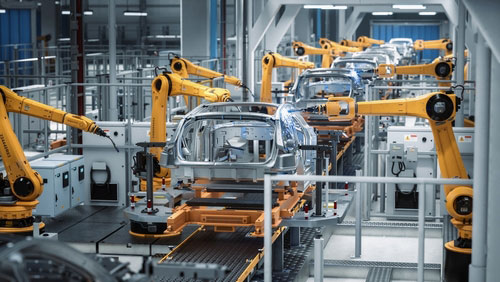By Alan O’Donovan and Jake Bumpus, Safety Engineering Consultants for Occupli Consultancy
When risk assessing a new or existing machine, it is important to determine whether its guarding has any openings by which someone could potentially be exposed to a hazard.
In line with the hierarchy of controls, openings should be minimised where at all possible to reduce access to hazards, such as dangerous moving parts. However, sometimes this is not feasible, for example due to openings being required for materials to enter or exit the machine.
EN ISO 13857:2019 ‘Safety distances to prevent hazard zones being reached by upper and lower limbs’ is a Type-B harmonised standard which contains proscriptive recommendations relating to openings in machinery guarding.
The standard contains a number of tables (Tables 3 to 7), which show the relationship between the size of an opening (e), and the minimum safety distance to the hazard zone (sr). The different tables are provided for consideration of different ages of persons exposed to the hazard, whether upper or lower limbs are at risk, and whether or not there are additional limitations of movement.
A reproduction of Table 4 is shown below, and is used for scenarios where persons of 14 years of age and above could reach through openings in machinery guarding. All dimensions are in millimetres.

As an example, assume that there there is currently a 50 mm square opening in a machine guard, and a dangerous moving part which poses a crushing hazard is 100 mm away from this opening.
According to Table 4, it is possible for an arm to reach into a 50mm square opening, and the minimum safety distance required is 850 mm. Assuming that the opening cannot be eliminated entirely, to comply with the requirements of the standard, two options would be:
- Move the guard further away from the dangerous moving part, to achieve the minimum safety distance of 850mm, or
- Reduce the size of the opening to 12 mm or less, therefore the current distance achieves the minimum safety distance in Table 4 of 80 mm.
If the opening is larger than 120 mm, then whole body access is possible, and additional safety measures are likely to be required.
Occupli Consultancy is a leading provider of Machinery Safety Support to many clients nationally and internationally. Our specialists provide practical advice, training, and machinery solutions to support your particular needs. Our team work to legislative requirements and benchmark against industry best practice.
Read more about our Machinery Safety services Here. Occupli Training also delivers IOSH accredited Machinery Safety training.

